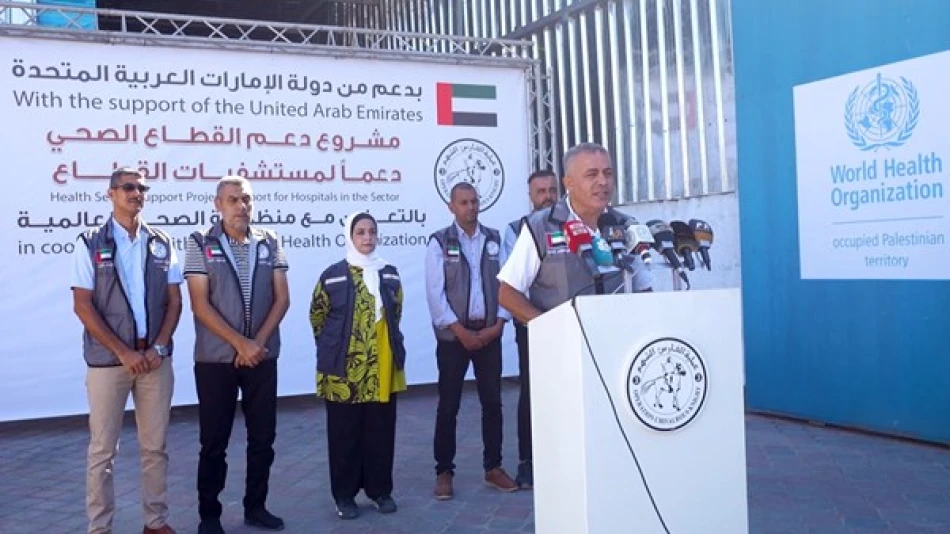
UAE Boosts Gaza's Healthcare with 65 Tons of Medical Supplies, Partnering with WHO
UAE Delivers 65 Tons of Life-Saving Medical Supplies to Gaza Amid Healthcare Crisis
The United Arab Emirates has delivered another substantial shipment of medical aid to Gaza through the World Health Organization, sending 65 tons of critical medicines and emergency medical supplies aboard 11 trucks. This latest delivery underscores the UAE's strategic role as a key humanitarian lifeline for Gaza's collapsing healthcare system, while highlighting the growing international reliance on Gulf states to fill critical aid gaps in conflict zones.
Critical Medical Infrastructure Under Siege
The shipment arrives as Gaza's healthcare sector faces what the WHO describes as an acute deterioration due to ongoing blockade conditions. The delivered supplies include life-saving medications and emergency medical equipment specifically designed to address the urgent needs of functioning healthcare facilities across the territory.
WHO representatives emphasized that the UAE has emerged as one of the most significant supporters of Gaza's healthcare sector, calling for enhanced international efforts to provide emergency relief. The organization confirmed that these medical supplies will directly contribute to alleviating the pharmaceutical crisis and strengthening hospitals' capacity to respond to escalating medical demands.
Strategic Humanitarian Positioning
This delivery forms part of the UAE's broader "Operation Gallant Knight 3", a comprehensive humanitarian initiative that extends beyond healthcare to include food security, shelter, education, and medical care for Gaza's population. The operation demonstrates the Emirates' sustained commitment to Palestinian humanitarian needs while positioning the country as a reliable partner for international organizations.
Regional Humanitarian Leadership
The UAE's approach mirrors similar strategies employed by other Gulf states, particularly Saudi Arabia and Qatar, in establishing themselves as crucial humanitarian actors in regional crises. Unlike purely financial contributions, the UAE's direct coordination with WHO warehouses creates a more efficient supply chain that bypasses traditional bureaucratic delays.
Implications for International Aid Architecture
The partnership between the UAE and WHO represents a evolving model of humanitarian assistance where wealthy Gulf states increasingly fill operational gaps left by traditional Western donors. This approach offers several advantages: faster deployment, reduced political complications, and direct coordination with established international frameworks.
For international organizations like the WHO, such partnerships provide both immediate relief capacity and longer-term strategic relationships with financially capable partners. The UAE's consistent support creates predictable aid flows that allow for better planning and resource allocation in crisis situations.
Broader Regional Strategy
Beyond immediate humanitarian impact, the UAE's sustained medical aid to Gaza serves multiple strategic objectives. It reinforces the country's image as a responsible regional power while maintaining constructive relationships with international organizations. This approach allows the Emirates to engage meaningfully with Palestinian issues without direct political confrontation.
The emphasis on healthcare aid specifically addresses one of Gaza's most critical vulnerabilities while avoiding the political sensitivities that often complicate other forms of assistance. Medical supplies represent universally acceptable humanitarian aid that transcends political divisions and demonstrates clear, measurable impact on civilian welfare.
 Layla Al Mansoori
Layla Al Mansoori







